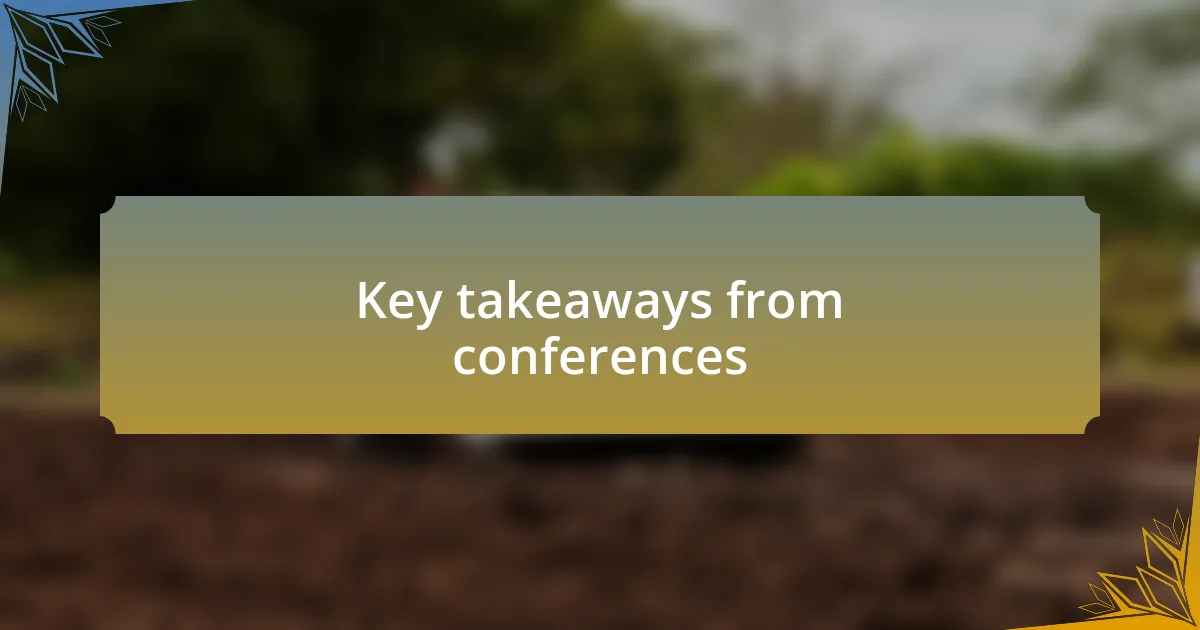Key takeaways:
- Usability tests provide critical insights into user behavior and emotions, revealing pain points that statistics alone cannot capture.
- Design should prioritize usability to foster user trust and satisfaction, balancing aesthetics with functional ease.
- Empathy and data-driven decision-making are essential for enhancing customer experience and driving meaningful improvements.
- Collaboration among cross-functional teams during usability testing can lead to innovative solutions and a better understanding of user needs.

Understanding usability tests
Usability tests are critical in understanding how real users interact with a website. I remember a particular session where participants struggled to find a simple contact form. Watching their frustration unfold was eye-opening; it made me realize how essential it is to design with users in mind. Have you ever felt lost on a website? It’s a common experience, and that’s where usability testing shines.
When I engage in usability testing, I focus on observing user behavior and gathering feedback. During one test, a user paused and exclaimed, “This doesn’t make sense!” That moment is invaluable. It highlights what seems intuitive to us may not be so for the average visitor. This type of first-hand insight is what can transform a site from merely functional to genuinely user-friendly.
It’s not just about finding issues; it’s about uncovering the underlying emotions of users as they navigate your site. I often ask participants how they feel during the test. Their candid responses reveal pain points and triumphs that statistics alone cannot convey. Have you considered how your website makes your users feel? These emotions are pivotal and can drive improvements that significantly enhance customer experience.

Importance of usability in design
Usability in design is fundamental because it directly impacts how users perceive and interact with a website. I recall a project where we redesigned a homepage after discovering that our navigation was overwhelming. The moment we simplified the layout, feedback was overwhelmingly positive; users felt more confident and less anxious about where to click next. Isn’t it remarkable how small changes can lead to such significant improvements in user satisfaction?
When I think about usability, I often reflect on my own experiences. There was a time when I visited a site that was beautifully designed but utterly confusing to navigate. This disconnect left me frustrated and I promptly left. That experience reinforced for me that aesthetics can’t overshadow usability. How often do we prioritize looks over function? Incorporating usability in design ensures that the visual appeal aligns with user needs, creating a harmonious balance.
Moreover, usability is about building trust and rapport with users. In a usability test, I once had a participant mention that they felt “heard” when they saw changes implemented based on their feedback. This connection between usability and user trust is vital. Isn’t it powerful when users not only find value in a site but also feel a genuine connection to it? Attending to usability gives us the opportunity to foster loyalty and long-term engagement with our audience.

Overview of customer experience conference
The Customer Experience Conference serves as a vital platform for professionals to share insights and best practices in enhancing user interactions across various touchpoints. I remember my first time attending; the buzz in the air was palpable, and I was struck by the diversity of perspectives shared by speakers and attendees alike. It’s fascinating how a single conversation can spark new ideas and strategies.
Sessions often delve into real-world case studies that illustrate the complexities and successes of customer experience initiatives. One particularly memorable session showcased how a small retailer improved customer satisfaction by simply listening to user feedback—something I’ve found can often lead to the most profound improvements. Isn’t it interesting how genuinely hearing from customers can transform a business narrative?
Networking at the conference is equally enlightening, with individuals eager to discuss their own experiences. I found myself in a conversation with a peer who shared a challenging project involving a major website overhaul. Their insights on navigating that journey and the integral role of usability testing resonated deeply with me. How often do we get the chance to connect with others facing similar challenges? The exchanges at this conference are pure gold for anyone looking to elevate their approach to customer experience.

Key takeaways from conferences
Attending the Customer Experience Conference has taught me that actionable insights emerge from shared experiences. One session focused on the power of empathy—the speaker encouraged us to walk a mile in our customers’ shoes. I found myself reflecting on how often we overlook this simple yet profound approach. Have you ever considered how deeply understanding your audience can reshape your strategies?
Another key takeaway was the significance of data-driven decision-making. During a lively panel discussion, a participant recounted how leveraging analytics transformed their approach to customer feedback. They shared how analyzing trends led to meaningful tweaks in their website that not only improved usability but also boosted sales. It made me think: how well do you know the numbers behind your customer interactions?
Lastly, the workshops were a goldmine for practical skills. In one workshop focused on usability testing, I learned techniques that I was able to implement immediately in my work. Engaging in hands-on activities reinforced the idea that knowledge is best absorbed through action. Isn’t it exhilarating to leave a conference with not just theories, but tangible tools ready for application?

My approach to usability testing
In my approach to usability testing, I prioritize creating an environment where participants feel comfortable sharing their honest thoughts. I remember a session in which I encouraged users to express their frustrations openly, and the feedback I received was eye-opening. Have you ever noticed how people often hold back their true feelings, fearing criticism? By fostering an atmosphere of trust, I’ve witnessed users articulate their challenges, leading to invaluable insights.
I also emphasize the importance of observation during testing. There was one occasion where I sat quietly in a corner, watching users navigate a website. Their gestures, sighs, and even moments of confusion painted a clearer picture than any survey could. How often do we overlook the subtle cues that reveal user sentiment? Analyzing these moments helps me identify usability issues that might otherwise float under the radar.
Collaboration with cross-functional teams is another pillar of my testing process. After conducting usability tests, I make it a point to involve designers, developers, and stakeholders in reviewing findings together. I once facilitated a session where everyone’s perspectives merged, sparking innovative solutions that none of us could have envisioned alone. Isn’t it fascinating how diverse viewpoints can lead to breakthroughs in user experience?

Real-life examples from my tests
During one usability test for an e-commerce website, a participant became visibly frustrated when trying to find a specific product. I vividly remember her shaking her head and saying, “This is impossible!” That moment hit me hard. It wasn’t just about website navigation; it revealed how critical it is to minimize barriers in user journeys. Have you ever found yourself in a similar situation, struggling to complete a task online? It really drives home the importance of user-centric design.
On another occasion, I tested a mobile app with a group of older adults. They expressed excitement at the app’s potential but struggled greatly with tiny buttons and unclear labels. Their hesitant interactions and the way they leaned in for a closer look sparked a realization for me: accessibility can’t be an afterthought. Have you thought about how age and familiarity with technology influence user experience? I learned that making adjustments for diverse users can dramatically improve overall satisfaction.
In a different test, I collaborated with a team to analyze how users interacted with a new feature. I noticed that participants tended to skip over brief instructional pop-ups, often missing key functionalities. Their dismissive gestures made me question whether we were truly supporting users. Isn’t it interesting how something meant to assist can sometimes end up ignored? That experience motivated us to redesign the onboarding process, prioritizing clarity and engagement, ultimately creating a smoother transition for new users.

Lessons learned from testing experiences
Understanding user behavior during testing has taught me invaluable lessons about empathy in design. For instance, while observing participants interact with a website, I noticed their body language—eyes narrowing, brows furrowed—as they struggled to complete basic tasks. It struck me: if users are so visibly frustrated, we aren’t just failing in design; we are overlooking their needs and experiences. Have you ever felt that frustration? It’s a powerful reminder that every click should feel intuitive and satisfying.
One unforgettable session involved a participant who initially appeared confident but grew increasingly anxious as the tasks became more complex. When I asked about her mounting discomfort, she explained that the overwhelming options made her feel lost. That conversation lingered with me; it underscored that usability isn’t just about functionality—it’s about creating a calming experience. How often do we forget that less can indeed be more, especially in our fast-paced online world?
Reflecting on these experiences, I’ve recognized the importance of direct feedback. In one test, I encouraged participants to vocalize their thoughts as they navigated a site. Their candid remarks provided insights that qualitative data simply couldn’t capture. I often wonder, how much value could we unlock by actively listening to our users’ voices throughout the design process? This approach has fundamentally shaped my methodology in conducting usability tests, reminding me that genuine user engagement enhances the entire product development cycle.